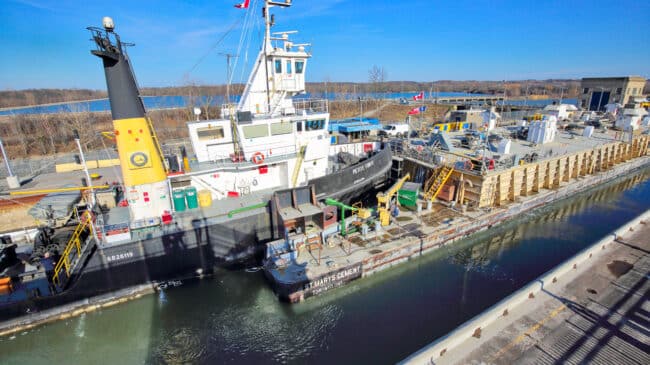Last month, the House version of the Water Resources Development Act of 2024 was introduced. The bill features significant updates, including modernizing the electronic permit application review process to enhance efficiency and introducing interagency coordination for federal environmental review. Other elements of the bill would impact deepening harbors and the levels of federal cost-sharing for deepening projects in good and bad ways. Despite these changes, the bill lacks substantial reforms for funding major inland waterways projects, missing a significant opportunity for long-term, sustainable solutions.
Water Resources Development Acts (WRDAs) are biennial pieces of federal legislation used to authorize the activities of several agencies and approve or disapprove major projects and appropriations in water resources. In the past, these bills have also served as platforms for reform. Oftentimes, the major stakeholders are the ones brought to testify before Congress in favor or against different provisions, but the range of those impacted varies.
The House’s Water Resources Development Act of 2024 (WRDA 2024) has some promising provisions and long-overdue modernization efforts buried in the bill.
Section 107 of WRDA 2024 amends provisions originally established in WRDA 2007 that ordered the secretary of the Army to establish an electronic permit application review process. The updated guidance in WRDA 2024 expands the scope of this electronic process to include interagency coordination (when necessary) on applications and documents related to federal environmental reviews and provides that the secretary must establish an electronic means of tracking these documents and reviews. This long-overdue change could help streamline the overly cumbersome environmental review process and modernize the system for the digital age.
Section 116 of the House bill, H.R. 8812, focuses on the beneficial use of dredged materials. These materials can sometimes be hazardous if left free-floating. For example, when dredged materials from Toledo on Lake Erie were dumped into open water it introduced phosphorus and nitrogen back into the lake. This led to a ban on open water dumping in Ohio, and the algal blooms caused by open dumping also created ecological challenges for the other areas bordering Lake Erie. But phosphorus (like what was dredged from Lake Erie) is a key component of agricultural fertilizer. Processing facilities were set up around Lake Erie for beneficial use, helping farmers and cutting down on the cost of shipping dredged material due to the facilities being near the lakeshore.
Section 116 of the proposal builds on the lessons learned in Toledo. The Army secretary will be eligible to allow a non-federal entity (like a port or a dredging company on a contract) to use disposal facilities within federal jurisdictions for the dumping and reuse of dredged material if the facility’s owner has given permission and if there will be enough capacity in other facilities for federal dredging needs. The secretary can also levy fees to cover the costs of using the federal disposal facilities.
Section 111 of H.R. 8812 is a mixed bag. This section would change existing guidance for harbor deepening from 50 feet to 55 feet. This change may seem inconsequential, but it is most impactful for cost-sharing agreements for harbor deepening projects, as Tables 1 and 2 below illustrate.
Table 1: Cost Sharing Agreements by Depth Before H.R. 8812
| Depth | Federal Share | Non-Federal Share |
| <20 Feet | 90% | 10% |
| 20-50 Feet | 75% | 25% |
| >50 Feet | 50% | 50% |
Table 2: Cost Sharing Agreements By Depth If H.R. 8812 Is Passed
| Depth | Federal Share | Non-Federal Share |
| <20 Feet | 90% | 10% |
| 20-55 Feet | 75% | 25% |
| >55 Feet | 50% | 50% |
In short, a harbor requesting dredging to 51 feet would go from paying 50% of the dredging costs pre-H.R. 8812 to 25% if the bill passes. This change would insulate port authorities from internalizing the costs of their dredging requests and could result in spending down the Harbor Maintenance Trust Fund balance. If it is not removed from the bill, this change should have an end date to avoid spending more than the trust fund can sustain for a prolonged period.
The biggest downside of the House bill is the lack of substantial reform to funding and financing major projects on the inland waterways system, ports, and harbors. As I’ve detailed in-depth in a Reason Foundation policy report, the inland waterways system needs sustainable financial revitalization—not a simple cash injection to help buy down the backlog of projects.
WRDA 2024 is the ideal time for long-term financing options to be brought to the inland waterways, capitalizing on reforms made in the 2014 edition of the WRDA. That legislation authorized the Army Corps of Engineers to oversee a public-private partnership pilot program in the waterways space, though it hasn’t seen much non-federal interest, especially for large-scale projects like lock construction and rehabilitation. These problems stem from the limitations of the pilot program itself, which bars direct private-sector participation. This prevents private firms from coming to the Army Corps with public-private partnership proposals, but Congress has chosen to leave the pilot program to languish.
Regrettably, the Senate’s version of WRDA 2024 (S. 4367) is equally reform-light. Congress has made some good changes in the latest version of WRDA 2024 but seems far too content with the status quo. The nation’s recurring issues with infrastructure funding will continue to plague waterborne transportation until they’re addressed directly, and taxpayers will continue to foot the bill for these modes of transportation, barring any long-term, fiscally responsible changes to these systems.

